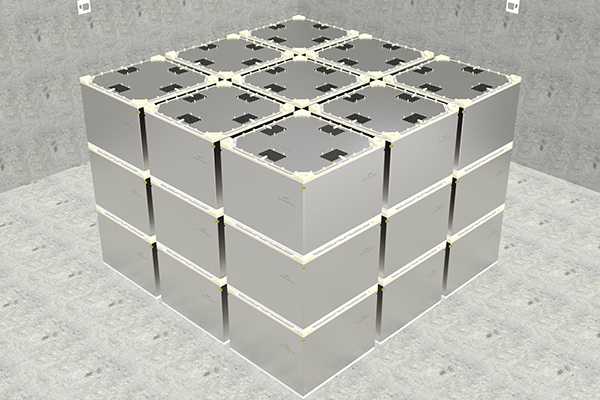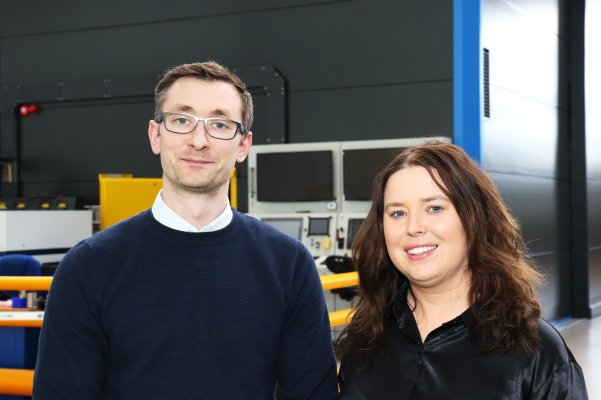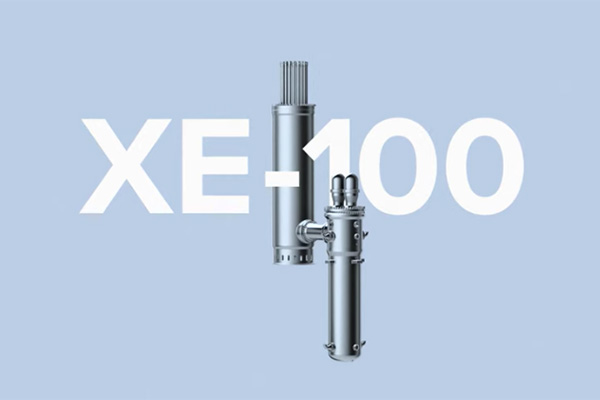The Nuclear AMRC has led a project for Sellafield Ltd to develop new smart technologies to monitor the condition of waste containers in long-term storage.
The research focused on innovative sensors which can help ensure the long-term safety of waste from the earliest years of the UK nuclear programme. The proposed sensor system will provide data on the condition of the waste over decades of storage.
Sellafield Ltd produces many thousands of containers of nuclear packages which require interim storage on the Sellafield site until a Geological Disposal Facility (GDF) is available. Throughout this storage period, Sellafield must demonstrate that the waste, the container and the store are evolving as expected, ideally with in situ monitoring over decades of storage.

Different kinds of waste require different kinds of container, with each type requiring a different set of key parameters to be monitored. In all cases, the sensors and any other electronic devices will need to operate for decades within a hazardous environment. They need a power supply which can also last for decades without human intervention. And they need to be able to securely transmit their data.
To tackle the challenges, Sellafield brought in the Nuclear AMRC’s digital controls and instrumentation (C&I) group based at Nuclear AMRC Midlands in Derby.
In the first phase, the team reviewed and tested a variety of commercially available low-power components to identify which could best meet the requirements, then used these off-the-shelf components to build and test initial prototype systems.
The team also identified several energy harvesting techniques which can be integrated with conventional power sources. Initial proof-of-concept tests showed that the proposed method is capable of harvesting enough ambient radiation to power a sensor over several weeks of operation.
“The challenge was to develop technologies to monitor asset health in a hazardous environment, on the assumption of no main power or battery supply, and no communication cables,” said Dr Li Li, head of the Nuclear AMRC’s C&I team. “With a combination of in-house hardware development and commercial off-the-shelf electronics, we were able to down-select the best techniques to meet the customer’s requirements and expectations for this first stage of research.”
To bring a full range of expertise to bear on the challenge, the Nuclear AMRC called on the specialist capabilities of other High Value Manufacturing Catapult centres and academic researchers.
The Centre for Process Innovation (CPI) studied potential solutions for the energy harvesting system, and developed a prototype to demonstrate the technology. The University of Bristol also contributed to the energy harvesting research.
Digital engineering specialists from the University of Sheffield AMRC developed wireless transmission and communication techniques which can securely carry data.
“This is an ambitious project,” commented Stephen Hepworth, technical lead for Sellafield Ltd. “We are continually seeking better ways to undertake our business through the novel application of technology. This project was designed to challenge our baseline approach and to demonstrate an early-stage concept. The impact has been to waken interest across the Sellafield business, and to turn a concept in a real business proposition.”
Proposed future work will involve producing a full prototype for further testing and validation, with protective shielding and miniaturisation of the whole integrated system. The prototypes will be tested in a simulated radiation environment at a UK test facility, to understand the mechanistic effects of gamma radiation on the electronics.
“Although we have validated the technologies developed in the lab environment, we need to go through the irradiation test and hardness design in the next stage to ensure the robustness of the prototypes,” Li said. “These sensors need to survive the extreme conditions of radioactive material storage for the long term.”
- For more case studies and R&D news, download our autumn newsletter (5MB pdf).




